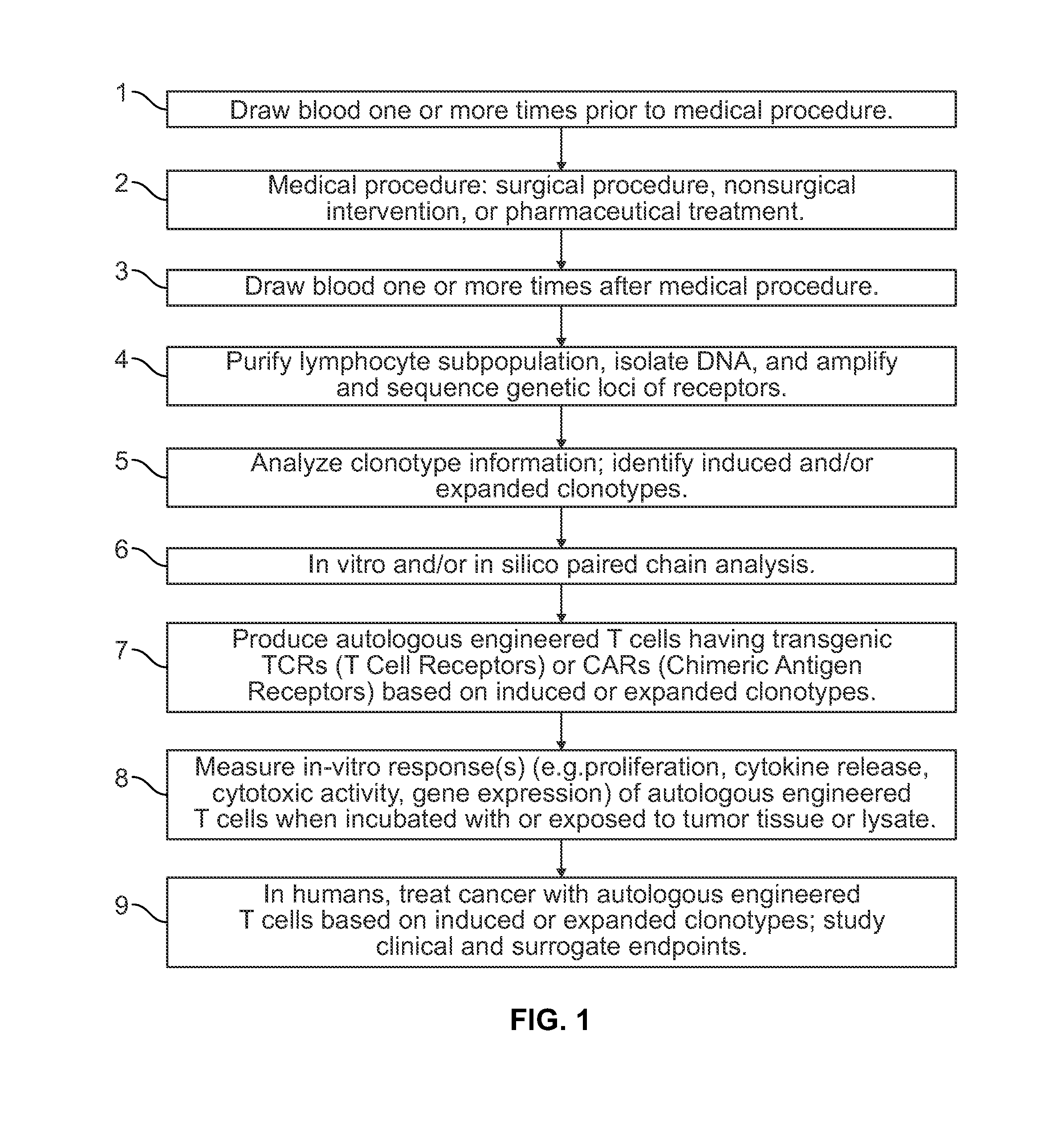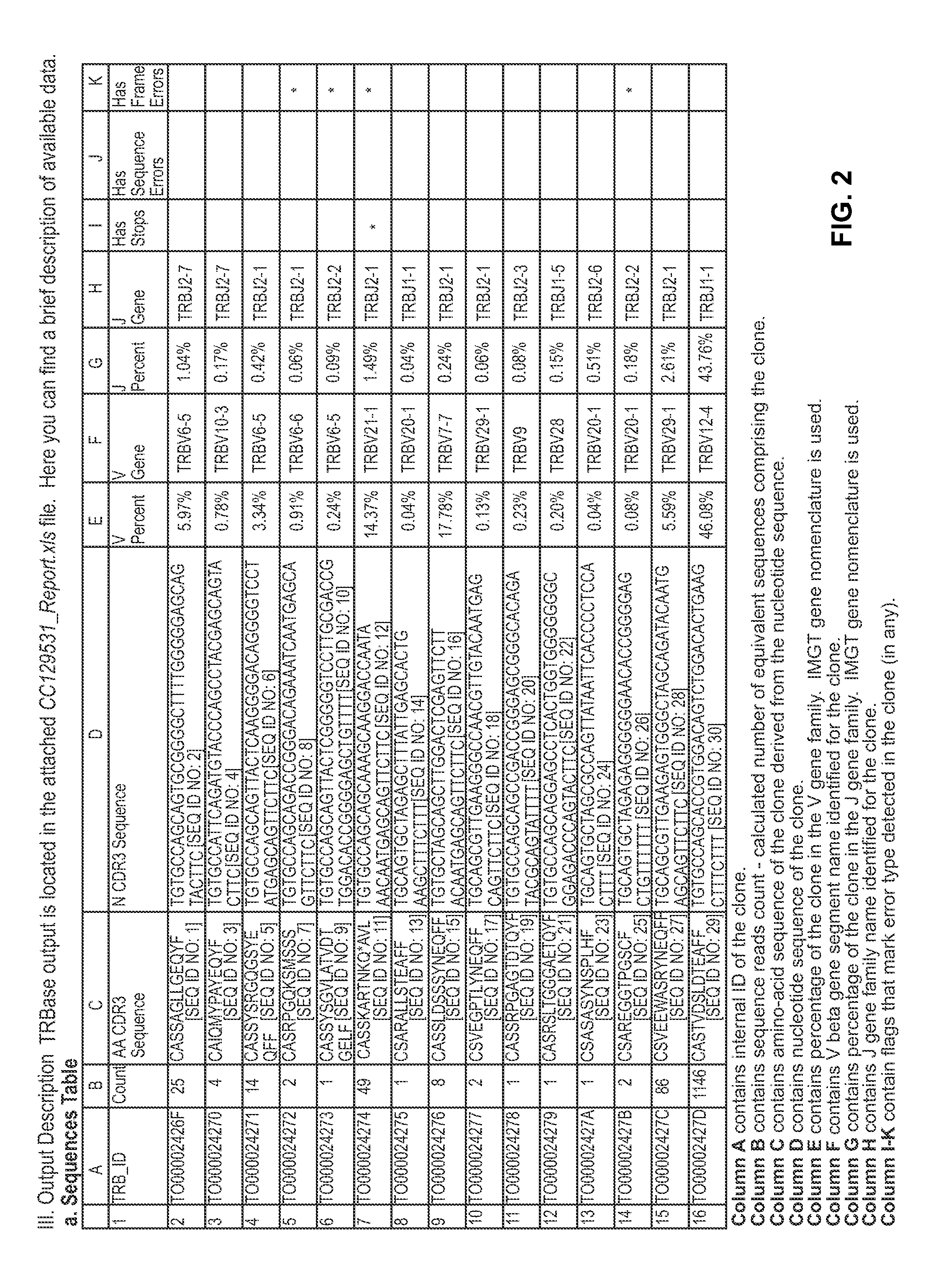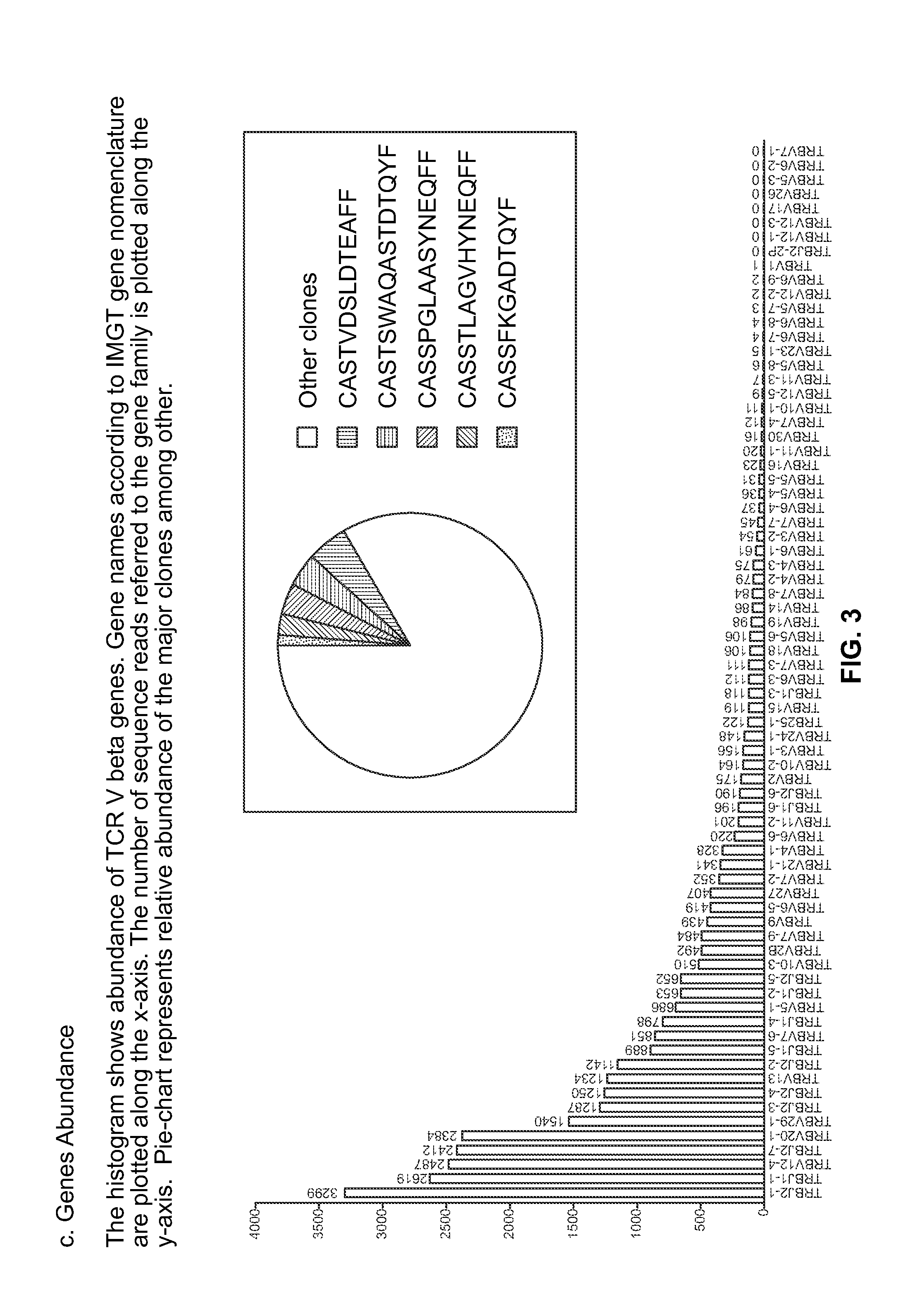Method to augment immune system in response to disease or injury
a technology of immune system and response, applied in the field of human and animal disease treatment, can solve the problems of inability to achieve good results, methods that do not exist today, and current treatment paths that are unavailabl
- Summary
- Abstract
- Description
- Claims
- Application Information
AI Technical Summary
Benefits of technology
Problems solved by technology
Method used
Image
Examples
example 1
[0143]This example illustrates a protocol for collecting outcome information for different medical treatments of prostatic cancer patients, where each treatment includes use of autologous engineered T cells.
[0144]Patients are recruited under an institutional review board (IRB) approved protocol for human subjects. Written informed consent is obtained from each patient.
[0145]Patient eligibility criteria are as follows: histologically confirmed adenocarcinoma of the prostate. We obtain a clinically diverse set of patients in order to analyze the relationship between the appearance of induced clonotypes to the clinical characteristics of the patient. This diversity includes patients with localized and non-localized disease. This diversity includes patients with or without prior history of treatment (e.g., hormone deprivation treatment). This diversity includes a range of stages of the disease.
[0146]We obtain a complete medical history at the time of intervention (where possible), inclu...
example 2
[0171]This example illustrates the efficacy of a cryosurgical and immunotherapeutic procedure based on a rodent study.
[0172]Cryosurgery and immunotherapy as well as a combination thereof was performed on a rat model for human prostate cancer, using rat prostatic tumor tissue (Dunning R3327). The Dunning R3327 rat carcinoma is a well-recognized model for human prostate adenocarcinoma. Sinowatz et al., PROSTATE 19(4):273-278 (1991).
[0173]The rats used for the procedure were Male Copenhagen rats between 8 and 15 weeks of age. The rats and rat food were purchased from Harlan Teklad (Madison, Wis.). The Dunning Cell line was obtained from Dr. Israel Barken (San Diego, Calif.) and propagated in RPMI 1640 media (Sigma-Aldrich, St. Louis, Mo.) with 10% Fetal
[0174]Bovine Serum (FBS; Sigma-Aldrich, St. Louis, Mo.) in 5% CO2 in air at 37° C. Tumor cells were subcutaneously implanted in rats with 2×105 cells on the left side of the rat (about ½ inch from the inguinal area) and 2×104 cells on th...
example 3
[0183]This example illustrates a protocol for identifying lymphocyte clonotypes that are usefully employed in one embodiment of the present invention.
[0184]Heparinized venous blood is layered onto a Ficoll-Isopaque (Lympho separation Medium, ICN Bio medicals, Ohio) in a 15 mL conical tube in the ration of 3:1. The tubes are centrifuged at 1800 rpm for 20 minutes and the middle layer is removed and transferred to another tube. The middle layer is then centrifuged at 2000 rpm for 10 minutes. The supernatant is discarded and the pellet is suspended in RPMI-1640 provided by ICN Bio chemicals, Ohio. The cells are washed twice with RPMI-1640 and suspended in 1 mL of RPMI-1640. The cell suspensions are divided into two tubes and incubated with fluorescein isothiocyanate (FITC) or phycoerythrin (PE) labeled anti-CD4 or anti-CD8 monoclonal antibodies manufactured by Pharmingen, San Jose, Calif. The tubes are mildly vortexed and incubated for 2 hours in the dark at room temperature. CD4+ and ...
PUM
| Property | Measurement | Unit |
|---|---|---|
| Fraction | aaaaa | aaaaa |
| Time | aaaaa | aaaaa |
| Frequency | aaaaa | aaaaa |
Abstract
Description
Claims
Application Information
 Login to View More
Login to View More - R&D
- Intellectual Property
- Life Sciences
- Materials
- Tech Scout
- Unparalleled Data Quality
- Higher Quality Content
- 60% Fewer Hallucinations
Browse by: Latest US Patents, China's latest patents, Technical Efficacy Thesaurus, Application Domain, Technology Topic, Popular Technical Reports.
© 2025 PatSnap. All rights reserved.Legal|Privacy policy|Modern Slavery Act Transparency Statement|Sitemap|About US| Contact US: help@patsnap.com



